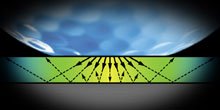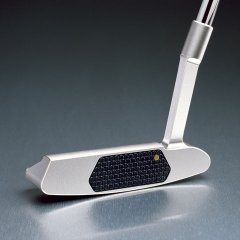Pixl Golf Wedges and Putters
Pixl Golf releases their new technology of 'Pixels' to the golfing World.

The Putter How it works: All pixl putters feature the proprietary pixel face insert technology. Pixel technology uses over 100 independent pieces, called pixels, to make up the hitting area of the clubface. The pixels are not attached to each other and act independently at impact. The result is a ball rebound that is extremely consistent regardless of the impact location.
My review: I prefer a putter with a smooth face. Looking at this putter, I could tell that I would not fancy carrying it in my bag. However, I can see, after using it, how it can help players manage the length of their putts. Like the sand wedge, the pixels transfer more energy to the ball on mis-hits. In long putts, this feature is particularly important. For players that consistently three-putt, you might want to try hitting this putter. I give it a rating of 6. Awards: In PGATour.com's "Best of the Best Golden Tee Awards" for year 2000, PGATour.com awarded the Pixl 1.8 Series the highest ranking, "birdie." Sharing the ranking with Pixl Golf was the Scotty Cameron Mil-Spec. Trailing behind Pixl and Cameron were such models as Odyssey White Hot, Ping Isoforce 2, Carbite, and Never Compromise, which were all ranked as "par." |





_26.jpg?width=1600)
_1.jpg?width=1600)